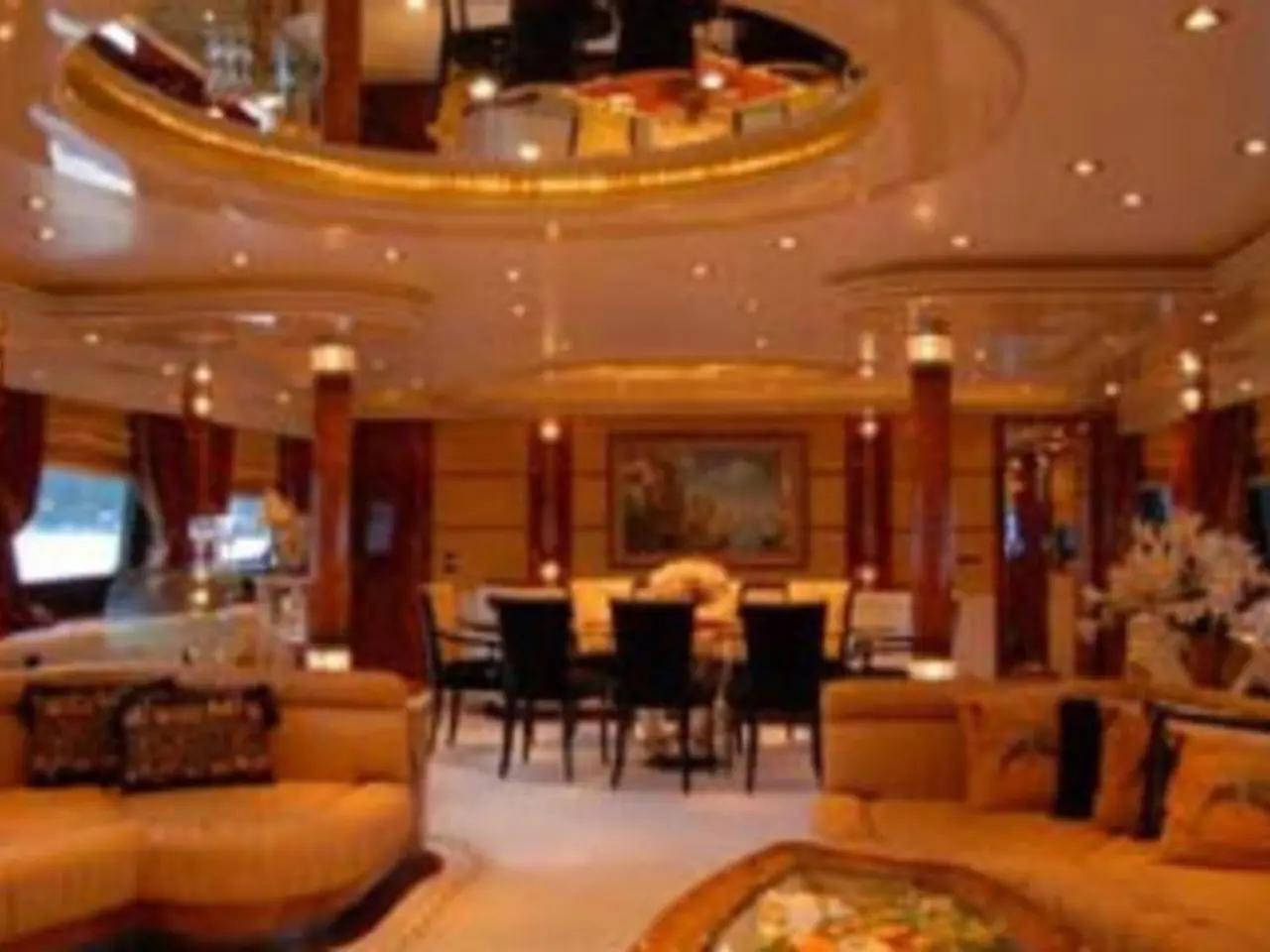Designers reshaping the modern-day pub landscape through interior concepts
In a thoughtful blend of tradition and modernity, interior designers are breathing new life into iconic British pubs while preserving their historical charm and character. This delicate balance has become a hallmark of the contemporary pub scene, as designers strive to maintain the essence of these cherished institutions while catering to the evolving tastes and expectations of patrons.
Key Strategies for Modernization
Designers are employing a variety of techniques to modernize traditional pubs, ensuring that these establishments remain relevant and appealing while retaining their unique character.
**Material Fusion & Authentic Detailing**
In the redesign process, designers often retain signature elements such as exposed wooden beams, brick walls, and antique brass beer taps, which contribute to the traditional pub atmosphere. However, they also introduce modern materials like sleek glass balustrades or LED strip lighting to create a brighter, more open feel. The use of reclaimed wood and furniture, as well as careful integration of new oak flooring with original materials, ensures a seamless transition between old and new.
**Functionality and Comfort**
Modern pubs often feature streamlined, comfortable furniture and raised decking areas to make the space more inviting and versatile. This caters to contemporary expectations of comfort and socializing, while outdoor elements like garden bars or BBQ areas extend the pub’s functionality into the surrounding environment.
**Lighting and Spatial Dynamics**
Modern lighting, particularly LED strips, enhances visibility and atmosphere without detracting from the pub’s cozy character. Mirrors and potted plants are used to distribute light and create a sense of spaciousness, making the environment feel larger and more welcoming. These subtle updates help maintain the pub’s intimacy while adapting to contemporary tastes.
**Curated Experiences**
Some refurbished pubs now incorporate curated retail spaces, community engagement areas, or even small culinary markets within their venues, reflecting a broader hospitality trend toward multi-functional spaces that honor local culture while staying relevant.
Maintaining Character Through Subtlety
Designers emphasize subtlety, carefully selecting materials that complement the original architecture and preserving historic features. Modern elements are introduced in a way that feels like a natural evolution rather than a jarring contrast. The goal is to create an environment that feels both timeless and current, appealing to both regulars and new patrons.
> “We were able to source the same oak slats and weave the new flooring into the original, so the transition between old and new is completely undetectable.”
Examples of Modernized Pubs
The Wheatsheaf in Oxfordshire, for instance, aims to make customers feel like they're stepping into a characterful home. In contrast, The Bear in Suffolk avoided humdrum mini fridges and bossy signage in favour of Octavia Dickinson's trademark punchy palette of greens and scarlets. Thoughtfully placed mirrors, plug sockets, and capacious hanging space were included in the bedroom design, while the twelve bedrooms were designed to feel like a home, with antique lamps, bed valances, and throws.
The Pheasant pub in Berkshire boasts interiors that could always have been there, but also features on-trend materials and colors. The Penny Bun pub in Ilkley, Yorkshire, has modern materials but nods to traditional pub design. The Walmer Castle pub in Notting Hill has reclaimed light fittings and vintage posters, along with luxurious fabrics.
Conclusion
Interior designers are modernizing traditional British pubs by fusing authentic materials with contemporary comforts, introducing flexible social spaces, and using lighting and greenery to refresh the atmosphere—all while respecting the essential character of these cherished local institutions. The result is a pub that feels both rooted in history and attuned to the present, ensuring its continued relevance in the community.
Designers such as James Thurstan, Octavia Dickinson, and Isabella Worsley have played significant roles in this transformation. As consumers increasingly expect more sophistication from pubs, these designers are meeting the challenge by reimagining the conventional pub interior and breathing new life into these beloved establishments.
- Designers blend traditional and modern elements in British pub renovations, using authentic details such as exposed wooden beams and antique brass beer taps alongside sleek glass balustrades, LED strip lighting, and reclaimed wood furniture.
- The modernization process also includes creating functional and comfortable spaces through streamlined furniture and raised decking areas, as well as incorporating outdoor elements like garden bars or BBQ areas.
- Strategies for modernizing pubs also include the use of lighting and greenery, such as LED strips, mirrors, and potted plants, to enhance the atmosphere without detracting from the cozy character.
- Some pubs now offer curated retail spaces, community engagement areas, or small culinary markets, reflecting a broad hospitality trend towards multi-functional spaces that honor local culture while staying relevant.





